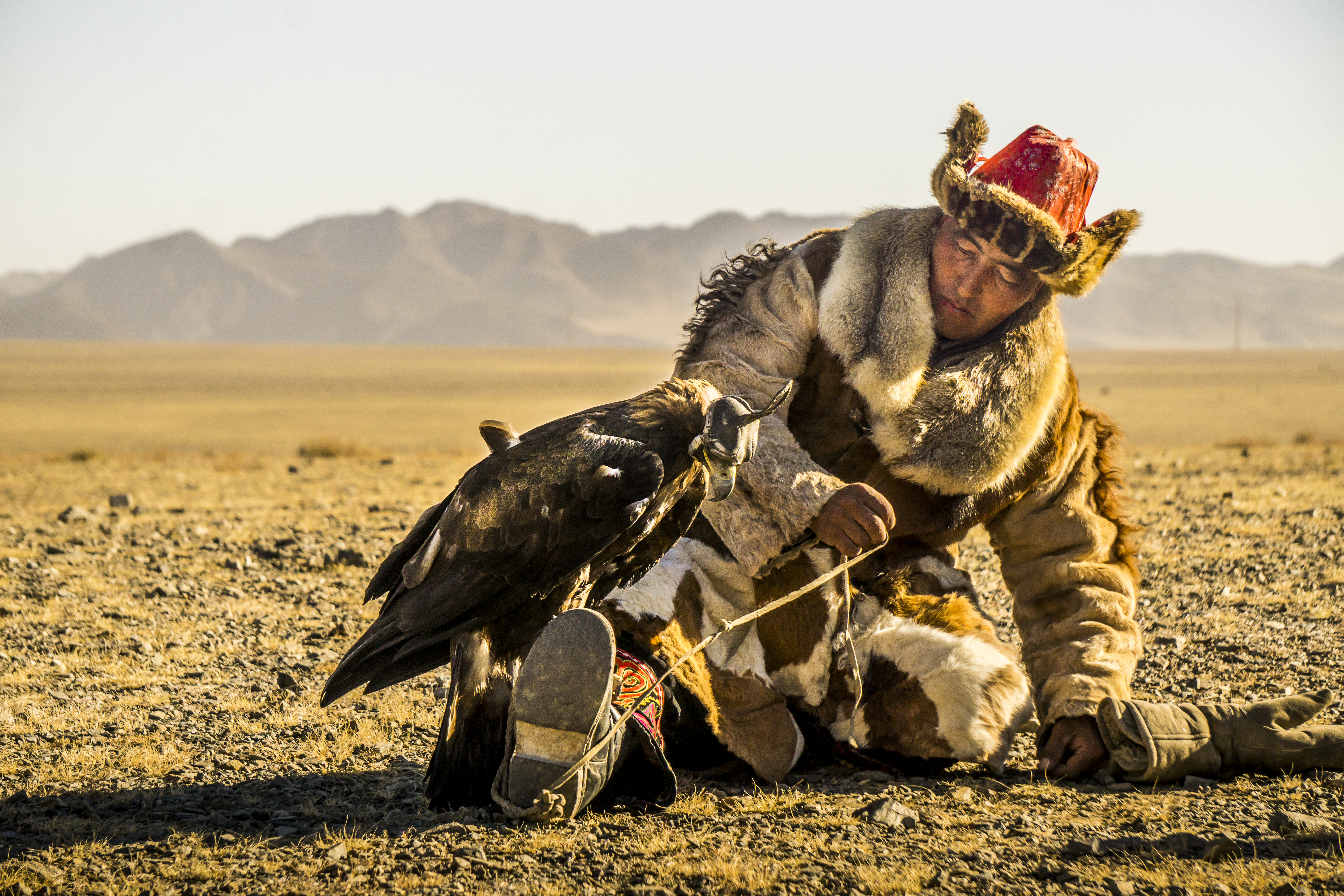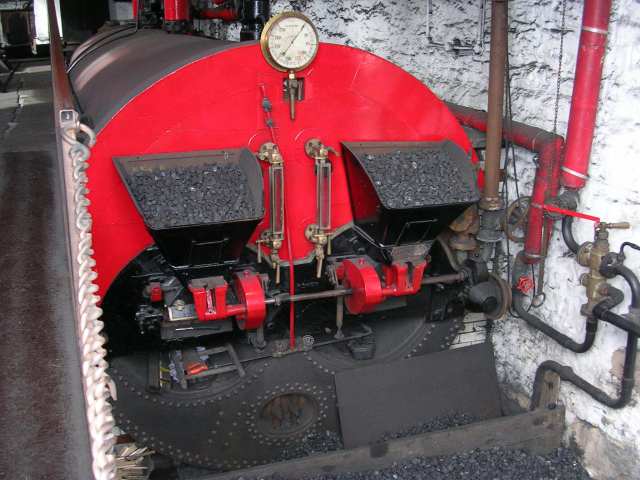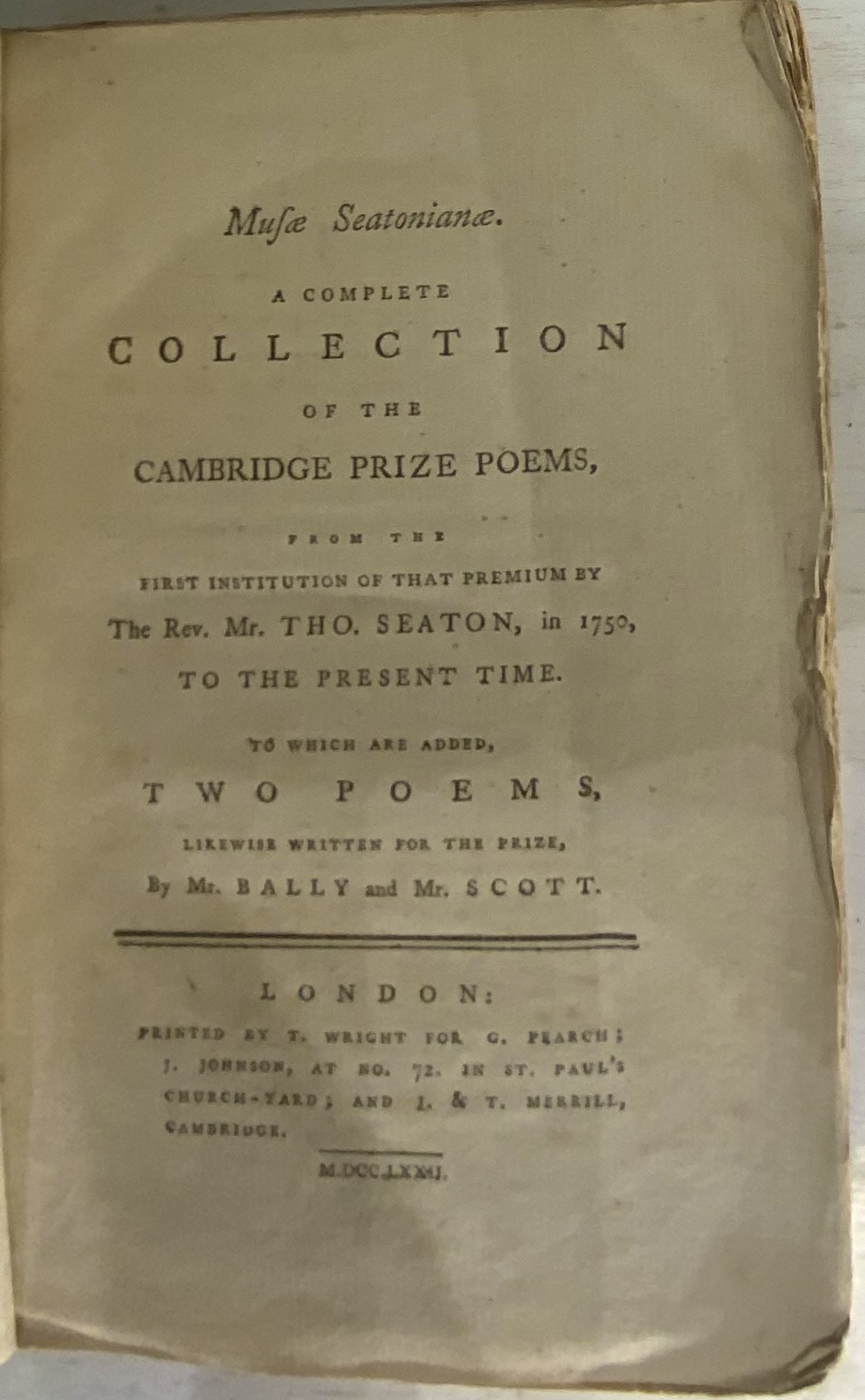|
Gage Earle Freeman
Gage Earle Freeman (1820–1903) was an English clergyman, known as a writer on falconry. Life Born on 3 June 1820 at Tamworth, Staffordshire, Tamworth, Staffordshire, was son of Capt. Charles Earle Freeman of the 69th (South Lincolnshire) Regiment of Foot, 69th Regiment by his wife Mary Parsons. After private education he was admitted a pensioner at St John's College, Cambridge, on 8 July 1840, and graduated B.A. in 1845, proceeding M.A. in 1850. Ordained deacon in 1846 and priest in 1847, Freeman held a curacy at Geddington, Northamptonshire, from 1846 to 1854, and the perpetual cure of Emmanuel Church, Bolton-le-Moors, from 1854 to 1856. He was then incumbent of Macclesfield Forest with Clough, Cheshire, till 1889, when he became vicar of Askham, Cumbria, Askham, near Penrith, Cumbria, Penrith, and private chaplain to the Earl of Lonsdale. This living he held for the rest of his life. Freeman died at the vicarage, Askham, on 15 December 1903, and was buried at Macclesfield For ... [...More Info...] [...Related Items...] OR: [Wikipedia] [Google] [Baidu] |
Falconry
Falconry is the hunting of wild animals in their natural state and habitat by means of a trained bird of prey. Small animals are hunted; squirrels and rabbits often fall prey to these birds. Two traditional terms are used to describe a person involved in falconry: a "falconer" flies a falcon; an "austringer" (Old French origin) keeps Eurasian goshawks and uses hawk, accipiters for hunting. In modern falconry, the red-tailed hawk (''Buteo jamaicensis''), Harris's hawk (''Parabuteo unicinctus''), and the peregrine falcon (''Falco perigrinus'') are some of the more commonly used birds of prey. The practice of hunting with a conditioned falconry bird is also called "hawking" or "gamehawking", although the words wikt:hawking, hawking and peddler, hawker have become used so much to refer to petty traveling traders, that the terms "falconer" and "falconry" now apply to most use of trained birds of prey to catch game. However, many contemporary practitioners still use these words in the ... [...More Info...] [...Related Items...] OR: [Wikipedia] [Google] [Baidu] |
Merlin (bird)
The merlin (''Falco columbarius'') is a small species of falcon from the Northern Hemisphere, with numerous subspecies throughout North America and Eurasia. A bird of prey, the merlin breeds in the northern Holarctic; some migrate to subtropical and northern tropical regions in winter. Males typically have wingspans of , with females being slightly larger. They are swift fliers and skilled hunters which specialize in preying on small birds in the size range of sparrows to doves and medium-sized shorebirds. In recent decades merlin populations in North America have been significantly increasing, with some merlins becoming so well adapted to city life that they forgo migration; in Europe, populations increased up to about 2000 but have been steady subsequently. The merlin has for centuries been well regarded as a falconry bird. Nomenclature The merlin was described and illustrated by the English naturalist Mark Catesby (as the "pigeon hawk") in his ''Natural history of Carolina, ... [...More Info...] [...Related Items...] OR: [Wikipedia] [Google] [Baidu] |
Hyde, Cheshire
Hyde is a town in Tameside, Greater Manchester, England. It lies within the Historic counties of England, historic county boundaries of Cheshire, and became part of Greater Manchester in 1974. The built-up area as defined by the Office for National Statistics had a population of 35,895 at the 2021 United Kingdom census, 2021 census. The town lies north-east of Stockport, west of Glossop and east of Manchester. Toponymy The name Hyde is derived from the ''Hide (unit), hide'', a measure of land for taxation purposes, taken to be that area of land necessary to support a peasant family. In later times, it was taken to be equivalent to . History Early history Newton Hall was present in the thirteenth century. Hyde was a township (England), township in the parish of Stockport. In the late 18th century, the area that was to become the town centre was no more than a cluster of houses known as Red Pump Street. Gee Cross to the south was the larger settlement at that time, with Hyde b ... [...More Info...] [...Related Items...] OR: [Wikipedia] [Google] [Baidu] |
Seatonian Prize
The Seatonian Prize is awarded by the University of Cambridge for the best English poem on a sacred subject. This prize has been awarded annually since 1750 and is open to any Master of Arts of the university. Lord Byron referred to this prize in his 1809 poem entitled "English Bards and Scots Reviewers". The prize is still awarded annually, with a deadline of 30 September each year. It is open to all members of the Senate of the University of Cambridge, and to anyone with the status of Masters of Arts. Founding This prize was founded by the Rev. Thomas Seaton, educated at Stamford School and a Fellow of Clare College, who died in 1741. The prize was financed by the revenue from his Kislingbury estate bequeathed to the university. His bequest was not formally accepted by the university until 1898, at which time regulations were drawn up for the administration of the Seatonian Prize by the Faculty of Divinity. Winners The winner in the first three years was Christopher Smart. ... [...More Info...] [...Related Items...] OR: [Wikipedia] [Google] [Baidu] |
Alexandra Park, London
Alexandra Park is a 200-acre (80–hectare), Green Flag Award, and Green Heritage winning, diverse-landscape park,– About (Retrieved 31 January 2008) in the Borough of Haringey in north adjacent to Hornsey, and . Laid out on the site of |
Joseph Wolf
Joseph Wolf (22 January 1820 – 20 April 1899) was a German artist who specialized in natural history illustration. He moved to the British Museum in 1848 and became the preferred illustrator for explorers and naturalists including David Livingstone, Alfred Russel Wallace and Henry Walter Bates. Wolf depicted animals accurately in lifelike postures and is considered one of the great pioneers of wildlife art. Sir Edwin Landseer thought him "...without exception, the best all-round animal artist who ever lived". Germany Joseph was the first son of a farmer, Anton Wolf, and his wife Elisabeth née Probstfeld. The Minnesota pioneer Randolph Michael Probstfield was his first cousin. Wolf was born in Mörz, near Münstermaifeld, then in Rhenish Prussia, not far from the river Moselle, in the Eifel region. He was originally called Mathias but later went by the name of Joseph. In his boyhood he assiduously studied bird and animal life, and showed a remarkable capacity as a draughts ... [...More Info...] [...Related Items...] OR: [Wikipedia] [Google] [Baidu] |
Francis Henry Salvin
Francis Henry Salvin (1817–1904) was an English writer on falconry and cormorant-fishing. Life Born at Croxdale Hall on 4 April 1817, was fifth and youngest son of William Thomas Salvin, of Croxdale Hall, Durham, England, Durham, by his wife Anna Maria, daughter of John Webbe-Weston, of Sutton Place, Surrey. Educated at Ampleforth College, he served for several years in the militia, joining the 3rd battalion of the York and Lancaster Regiment in 1839 and retiring with the rank of captain in 1864. In 1857 Salvin inherited from his uncle, Thomas Monnington Webbe-Weston, the Tudor mansion Sutton Place, Surrey, but usually lived at Whitmoor House on the estate. He trained young otters to follow him like dogs and sleep in his lap, and at one time kept a wild boar with collar and bell. He was active in field sports when past 70. Salvin died unmarried on 2 October 1904, at the Manor House, Sutton Park, Guildford, and was buried in St. Edward's cemetery, Sutton Park. Field sports Haw ... [...More Info...] [...Related Items...] OR: [Wikipedia] [Google] [Baidu] |
The Field (magazine)
''The Field'' is a British monthly magazine about country matters and field sports. It was started as a weekly magazine in 1853, and has remained in print since then; Robert Smith Surtees was among the founders. In the nineteenth century, it was known as ''Field: The Country Gentleman's Newspaper''. The magazine is one of the earliest hobby magazines. It is published by Future plc. Editors of ''The Field'' * 1853–1857: Mark Lemon Mark Lemon (30 November 1809, in London – 23 May 1870, in Crawley) was the founding editor of both ''Punch (magazine), Punch'' and ''The Field (magazine), The Field''. He was also a writer of Play (theatre), plays and verses. Biography ... * 1857–1888: John Henry Walsh * 1888–1899: Frederick Toms * 1900–1910: William Senior * 1910–1928: Sir Theodore Andrea Cook * 1931–1937: Eric Parker * 1938–1946: Brian Vesey-Fitzgerald * 1947–1950: Leonard V. Dodds * 1951–1977: Wilson Stephens * 1977–1984: Derek Bingham * 1984–1 ... [...More Info...] [...Related Items...] OR: [Wikipedia] [Google] [Baidu] |
Thomas Powys, 4th Baron Lilford
Thomas Littleton Powys, 4th Baron Lilford (18 March 1833 – 17 June 1896), was a British aristocrat and ornithologist. Life Lilford was the eldest son of Thomas Powys, 3rd Baron Lilford, and Mary Elizabeth Fox, daughter of Henry Vassall-Fox, 3rd Baron Holland. He was born in Stanhope Street, Mayfair, London, on 18 March 1833. He succeeded his father in the Lilford barony in 1861. Lilford was one of the eight founders of the British Ornithologists' Union in 1858 and its president from 1867 until his death. He was also the first President of the Northamptonshire Natural History Society. Lilford travelled widely, especially around the Mediterranean and his extensive collection of birds was maintained in the grounds of Lilford Hall, his second residence was Bank Hall in Bretherton, Lancashire, which he inherited from his father (3rd Baron Lilford), who inherited it from George Anthony Legh Keck.J. Howard (2011) "Bank Hall Timeline", He inherited the Holland Estates from his moth ... [...More Info...] [...Related Items...] OR: [Wikipedia] [Google] [Baidu] |
Ferret
The ferret (''Mustela furo'') is a small, domesticated species belonging to the family Mustelidae. The ferret is most likely a domesticated form of the wild European polecat (''Mustela putorius''), as evidenced by the ferret's ability to interbreed with European polecats and produce hybrid offspring. Physically, ferrets resemble other mustelids because of their long, slender bodies. Including their tail, the average length of a ferret is about ; they weigh between ; and their fur can be black, brown, white, or a mixture of those colours. The species is sexually dimorphic, with males being considerably larger than females. Ferrets may have been domesticated since ancient times, but there is widespread disagreement because of the sparseness of written accounts and the inconsistency of those which survive. Contemporary scholarship agrees that ferrets were bred for sport, hunting rabbits in a practice known as rabbiting. In North America, the ferret has become an increasingly pro ... [...More Info...] [...Related Items...] OR: [Wikipedia] [Google] [Baidu] |
Goshawk
Goshawk may refer to several species of birds of prey in the family Accipitridae: Palearctic * Eurasian goshawk, ''Astur gentilis'', often referred to simply as the goshawk, since it is the only goshawk found in much of its range (in Europe and Asia). Nearctic * American goshawk, ''Astur atricapillus'', often referred to simply as the goshawk, since it is the only goshawk found in much of its range (in North America). Afrotropical The Afrotropical realm is one of the Earth's eight biogeographic realms. It includes Sub-Saharan Africa, the southern Arabian Peninsula, the island of Madagascar, and the islands of the western Indian Ocean. It was formerly known as the Ethiopi ... * African goshawk, ''Aerospiza tachiro'' * Red-chested goshawk, ''Aerospiza toussenelii'' * Henst's goshawk, ''Astur henstii'' * Pale chanting goshawk, ''Melierax canorus'' * Dark chanting goshawk, ''Melierax metabates'' * Eastern chanting goshawk, ''Melierax poliopterus'' * Gabar goshawk, ' ... [...More Info...] [...Related Items...] OR: [Wikipedia] [Google] [Baidu] |
Swythamley Park
Swythamley Hall is a late 18th-century country house near Leek, Staffordshire with architectural of classical, Italianate and Jacobean style sitting within the 140 acre private Swythamley Park (a former deer park). The current buildings on the site include the main hall (sub-divided into 4 self contained apartments), with an additional 3 residencies in the grounds of Swythamley Park (The Coach House, The Tenants Hall and The Estate House). The Main Hall and Coach House are Grade II listed building. History Medieval period The land that is now Swythamley Park is first recorded as belonging to Dieulacres Abbey who, in the 13th century constructed a grange house (a large farmhouse) on the site. At some time prior to the dissolution, the grange house was demolished and replaced by a hunting lodge that may have been referenced by the poem Sir Gawain and the Green Knight. 16th century Following the dissolution of Dieulacres Abbey the manor of Swythamley was briefly held by King Hen ... [...More Info...] [...Related Items...] OR: [Wikipedia] [Google] [Baidu] |






